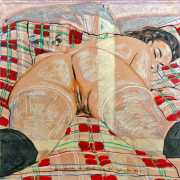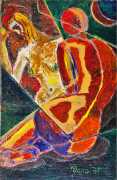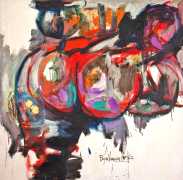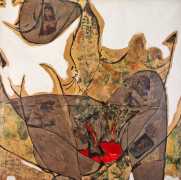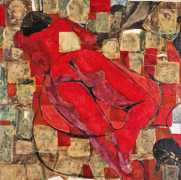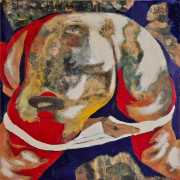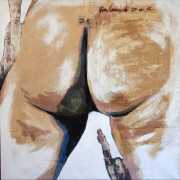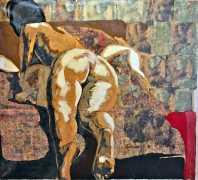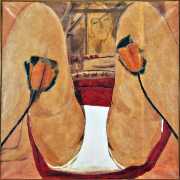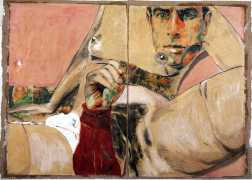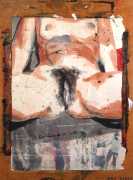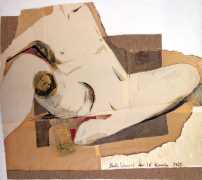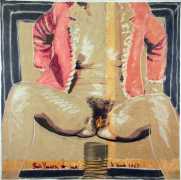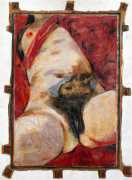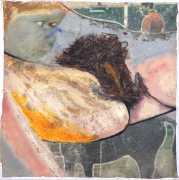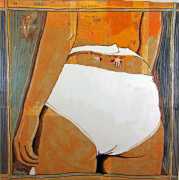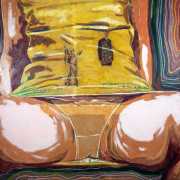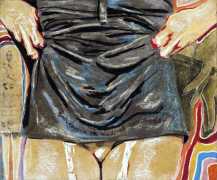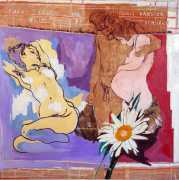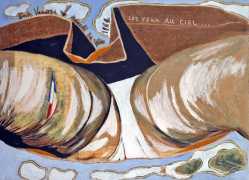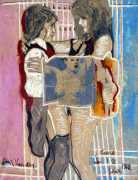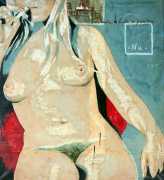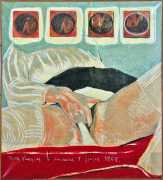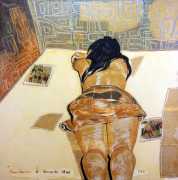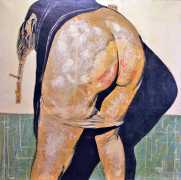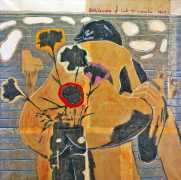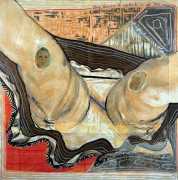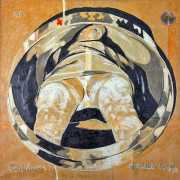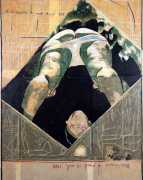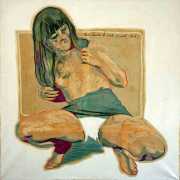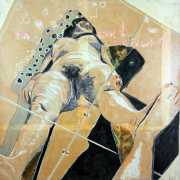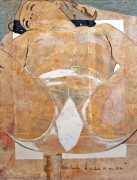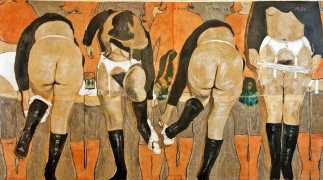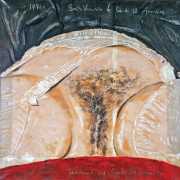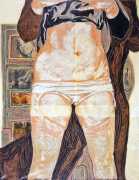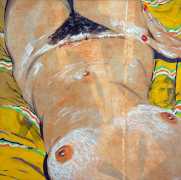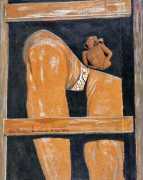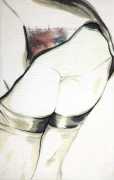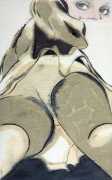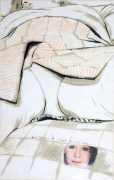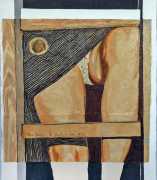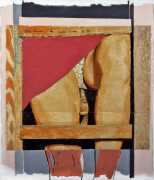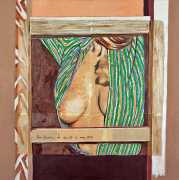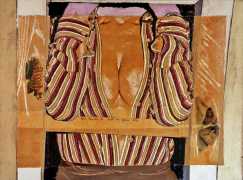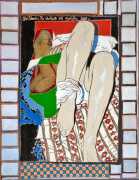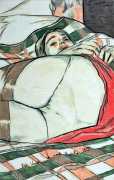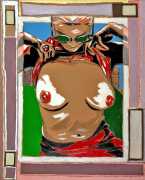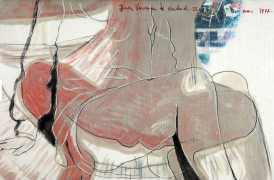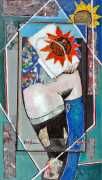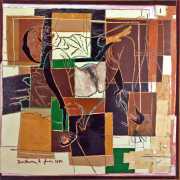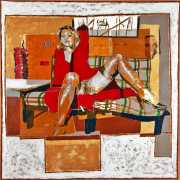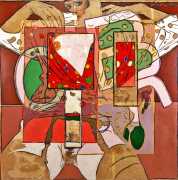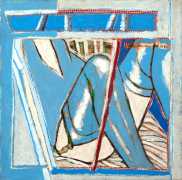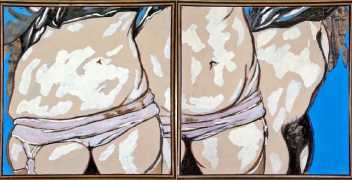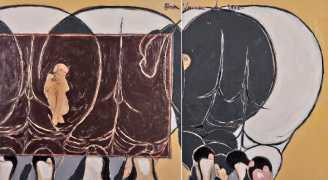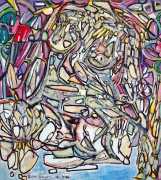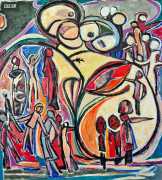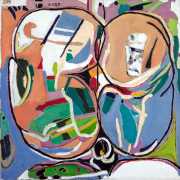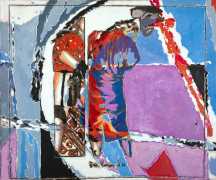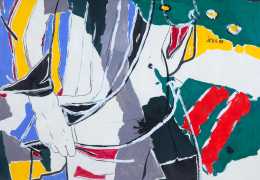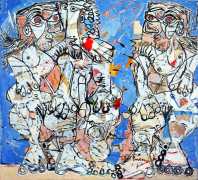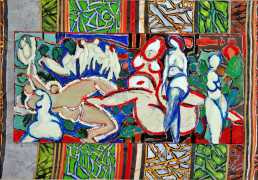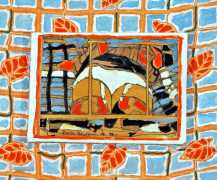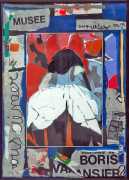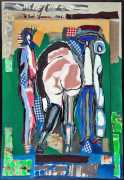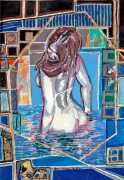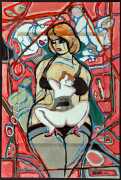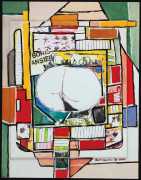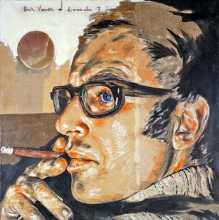 The Swiss artist Boris Vansier was born in Russia, but spent his childhood and adolescence in his parents’ home town of Geneva, during which time he demonstrated and then confirmed his drawing skills, which naturally led him to painting. In 1946 he left for the United States where he lived for two years as a student, first in New York where he took courses at Adelfly College Long Island, then in Los Angeles where he enrolled at the Chouinard Art Institute.
The Swiss artist Boris Vansier was born in Russia, but spent his childhood and adolescence in his parents’ home town of Geneva, during which time he demonstrated and then confirmed his drawing skills, which naturally led him to painting. In 1946 he left for the United States where he lived for two years as a student, first in New York where he took courses at Adelfly College Long Island, then in Los Angeles where he enrolled at the Chouinard Art Institute.
In 1948, after a brief return to Switzerland, he moved back to Montreal with his Parisian fiancée, Claude-Marie Plouvier, whom he then married. In 1949 the twins Gérald and Daryll were born. That same year, while exhibiting a few paintings in a Montreal art gallery, Boris Vansier met the New York gallery owner Henry Kleemann, who took an interest in his work and offered him his first exhibition.
In 1954, now separated, Vansier left Canada for good to settle in France, first in Cannes until 1956, then in Paris where he set up his studio at 56 rue de la Convention in the fifteenth arrondissement. New Realism artists David Lan-Bar and Raymond Hains became his closest friends. In 1960 he met Pascale Honegger, the daughter of composer Arthur Honegger and pianist Andrée Vaurabourg, and married her. In 1961 their daughter Maude was born. The couple separated in 1966.
It was around this time that Vansier developed his own technique of painting and collage, which he called collages impregnés. He created series of pictures on various themes using pictures from magazines or newspapers pasted onto impregnated paper, which were pasted onto canvas to serve as the base for the paintings. In 1964 Vansier met the Paris gallery owner Iris Clert, who organised an exhibition entitled ‘Thirty Portraits of General de Gaulle’, followed by a second exhibition a year later. Both made extensive use of collages impregnés, as did his 1967 exhibition Offrandes (Offerings), in which he wanted ‘to paint exactly those parts of women from which other painters have shied away.’
In 1970 he settled again in Switzerland where five years later he met and married his third wife, Hiltrud Kratel. A highly prolific artist, he has continued to paint well into his nineties, often returning to the general theme of offerings, never quite pinning down whether it is his female models offering themselves, or the artist treating his subjects as offerings – a perennial theme in artist-model relationships.
In 2019 one of Boris Vansier’s twin sons, Daryll, made a documentary film about the father who left his children when they were just five years old. Entitled The Portrait of an Artist as an Old Man, it takes the form of an extended interview between Vansier and Daryll. As Daryll Vansier explains, ‘for Boris his story as a human being is inseparable from his story as an artist. In this way, the film is different from traditional cultural biographies, and speaks to anyone who has ever been drawn to art. When I was preparing my interview questions, I had hoped the film would provide commentary on many issues I saw in the art world, but I didn’t realise how clear Boris’s insights would be on this, or how strongly they would impact people who didn’t have as much direct experience with art.’ You can read more about the film here.
We are very grateful to our Russian friend Yuri for introducing us to this artist and supplying many of the images.

